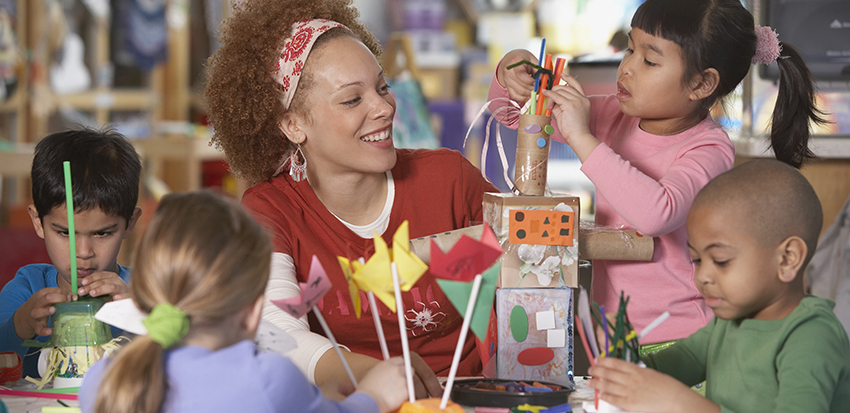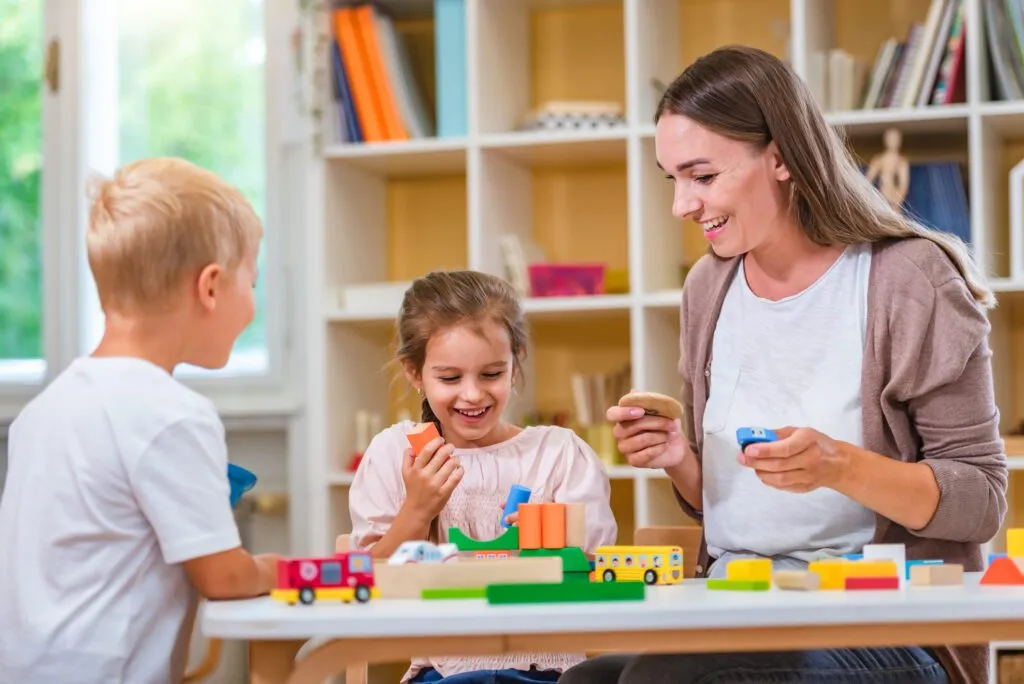The First Six Weeks: Building a Strong Foundation in Preschool and Pre-K


The first six weeks of the school year are a time of promise and possibility. As teachers welcome young children into their classrooms, some of whom are entering school for the very first time, they are doing more than learning names, showing where the crayons go, or helping with morning routines. They are laying the foundation for a year (and a lifetime) of joyful, meaningful learning.
In all classrooms, but especially preschool, pre-K, and transitional kindergarten (TK) classrooms, these first weeks are a chance to intentionally build a classroom community rooted in trust, safety, and connection. It’s a time to slow down; focus on relationships; and help every child feel known, valued, and ready to learn.
Why the First Six Weeks of School Matter
The early childhood years are an exciting and important time in a child’s life. The adults they interact with, both family members and teachers, play a central role in shaping how children view themselves and others. Children need to feel safe, cared about, and listened to. When teachers intentionally nurture strong relationships with children and families, they help build the foundation for all future learning.
During the first six weeks of school, teachers have the opportunity to create a classroom environment that is warm, welcoming, and responsive. This sense of community is not something that happens by accident: it is built day by day, interaction by interaction.
Seven Questions to Build a Positive Classroom Community
At the beginning of the year, as teachers get to know the children in their care, there are a few key questions that can guide their efforts to create a strong classroom community. These are questions children may be wondering about—even if they’re not quite able to say them out loud.
1. Who are the people in our classroom?
Children begin to learn about their peers, their teacher, and themselves as members of a group. Building a sense of belonging starts with helping children know each other and feel known in return.
2. How can we express our feelings at school?
Early in the year, teachers model and guide children in naming and discussing their emotions. By helping children learn to express their feelings in appropriate ways, teachers support emotional development and build trust.
3. When do things happen at school?
Establishing consistent routines helps children feel secure and confident. When children know what to expect, they can focus on learning and exploration.
4. What are the rules at school?
Rather than simply listing classroom rules, teachers can involve children in creating agreements based on respect, kindness, and safety. This empowers children and helps them understand why the rules matter.
5. Who works at our school?
From the school nurse to the front office staff, children benefit from learning who the caring adults in their school community are and how they can help.
6. How do we make and keep friends at school?
Friendship skills, such as taking turns, using kind words, and resolving conflicts, are learned through practice. Teachers create the environment and opportunities where these skills can grow.
7. How can I do things for myself?
As children take on classroom jobs, make choices, and take care of their belongings, they develop independence and confidence.
These questions aren’t meant to be answered once and set aside. They’re the starting point for ongoing conversations, discoveries, and relationships. And importantly, teachers don’t need to provide all the answers right away. In fact, posing the questions and exploring them together helps children develop critical thinking, empathy, and a deeper understanding of their world.
How School Leaders Can Support Strong Classroom Communities
The work of building classroom community doesn’t rest on teachers’ shoulders alone. School leaders and administrators play a vital role in creating the conditions for this work to thrive.
- Prioritize relationship-building: Make it clear that taking time to build community is not only acceptable, it’s essential. Help shift the mindset from “getting through content” to “getting to know children.”
- Protect time and space: Encourage teachers to spend the first several weeks focusing on routines, interpersonal skills, and community norms, without pressure to accelerate academic pacing.
- Provide resources and training: Support professional learning that equips teachers to foster strong relationships and classrooms.
- Model community values: When leaders prioritize connection, curiosity, and care, those values filter into every classroom.
When teachers and leaders work together to build strong communities, everyone benefits—especially the children.
Start With Intention. Begin With Connection.
The most powerful learning is built on a foundation of positive relationships and helping children know they are safe, loved, and capable.
During the first six weeks of school, teachers have the opportunity to create a space where every child feels like they belong. By focusing on the questions children are silently asking and, importantly, giving them space to explore those questions together, educators build the kind of classroom community where learning and growth flourish.
That’s why the first six weeks of school receive special attention in The Creative Curriculum for Preschool, Pre-K, and Transitional Kindergarten. Built into the foundation of the curriculum are intentional supports, guidance, and daily plans designed to help teachers focus on what matters most during this important time: relationships, routines, and community.

Free eBook: Six Core Questions at the Heart of a Positive Classroom Community
Get practical strategies, reflection prompts, and classroom examples to guide your work this year.